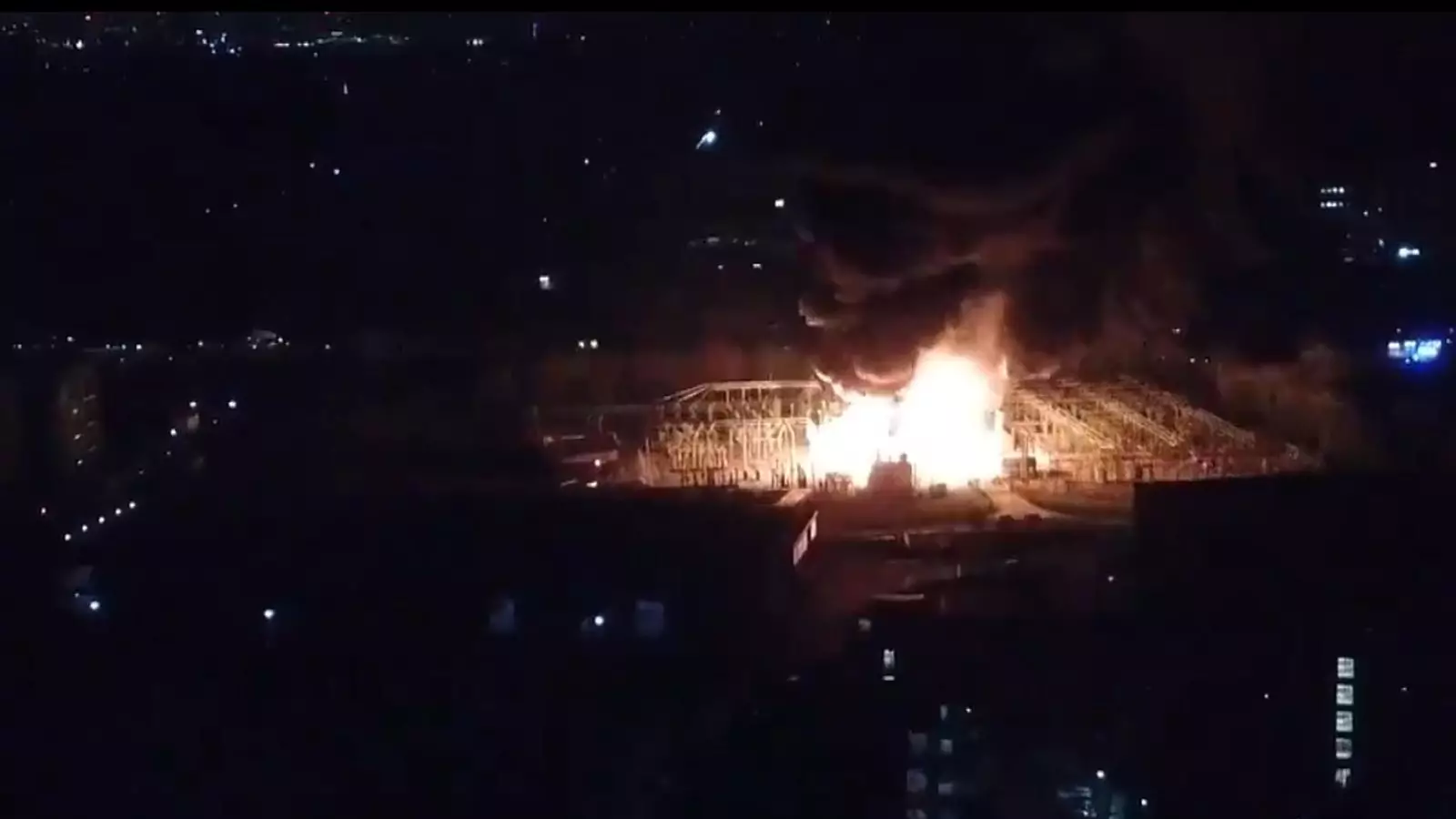Heathrow Airport’s significant interruption due to a fire at a nearby electricity substation serves as a stark reminder of the fragile nature of modern transportation infrastructure. Scheduled to remain closed until midnight, reports of a “significant power outage” emphasize not just the immediate consequences for travel plans but also a broader commentary on our reliance on increasingly vulnerable systems. While we may take the continuous hum of an airport’s activity for granted, this incident forewarns serious repercussions far beyond the closed gates of Heathrow.
As of now, over 1,351 flights have been disrupted, a staggering figure that underscores the interconnectedness of global travel. The fallout from this incident extends not just within the confines of the airport itself but ripples through countless connecting flights, impacting passengers, airlines, and the economies that rely on fluidity of air travel. This situation raises a question: how prepared are we as a society for similar emergencies that could mean life or death, or at the very least, catastrophic inconvenience?
The Human Cost of Infrastructure Failures
In the wake of such emergencies, it’s impossible to overlook the human dimensions involved. Travelers, families, and business professionals are left stranded, their plans dashed as they are urged to stay away from an airport rendered temporarily useless. The ripple effects extend into hospitality, car rentals, and other sectors reliant on smooth air travel. British Airways, Heathrow’s largest carrier, has advised passengers not to come to the airport until the crisis is resolved, demonstrating how quickly our travel-centric lives can be derailed by single, localized events.
Imagine being a business traveler stranded overnight, or a family whose long-awaited vacation is thwarted when a simple power failure escalates into a major disruption. While some may dismiss these inconveniences as the price we pay for progress, synthesizing a more universal narrative demands we recognize the human impact behind each statistic.
The Role of Emergency Services
As the London Fire Brigade scrambles to control the blaze, their efforts underline the gravity of the situation. With 70 firefighters on scene and emergency services working tirelessly to extinguish a large fire, we must also consider the systems in place designed to protect public safety. While commendable, the nature of these responses also raises questions about preparedness. Why, in an era of rapid technological advancement, do such failures still occur? Why are so many innocent lives affected by failures in infrastructure that should, at the very least, have backup systems in place?
The need for improved emergency responsiveness and robust infrastructure cannot be overstated. If a fire can create chaos at one of the world’s busiest airports, are we as a society doing enough to proactively manage risk? The National Grid’s spokesperson expressed commitment to quickly restoring power supplies, but such reassurances often feel hollow in the moment of chaos. We need solutions that go beyond just pledging swift restitution.
Community Resilience and Collective Actions
Local residents, too, feel the threat posed by the power outage, with 16,000 homes affected. Residents have been advised to stay indoors to safeguard themselves from smoke inhalation, prompting an urgent inquiry into community safety measures. As a society, we need to discuss the importance of resilient local infrastructures that can withstand emergencies like the one seen today. Events like these bring people to the forefront, pressing communities to rely on each other for support while questioning the adequacy of their local services.
This event serves as a wake-up call for collective action towards ensuring community sustainability and public safety. We can no longer simply rely on large corporations and governmental bodies to handle crises. Grassroots initiatives that bring together local leaders, emergency services, and community members can lead to far more robust responses during emergencies.
A Step Back to Reflect on Our Progress
Ultimately, the incident at Heathrow Airport—the flames engulfing the electricity substation, the chaos that ensued, and the disrupted travel plans—invites a broader reflection on our increasingly interconnected world. It prompts a discourse on how individuals, corporations, and governments can optimize both responses and resources. While the immediate repercussions are daunting, such events can be a turning point. Pressures mount for sustained dialogue about safety, preparedness, and community resilience, contributing to the vital engagements needed to repair not only physical infrastructure but also societal trust in our systems.



Leave a Reply